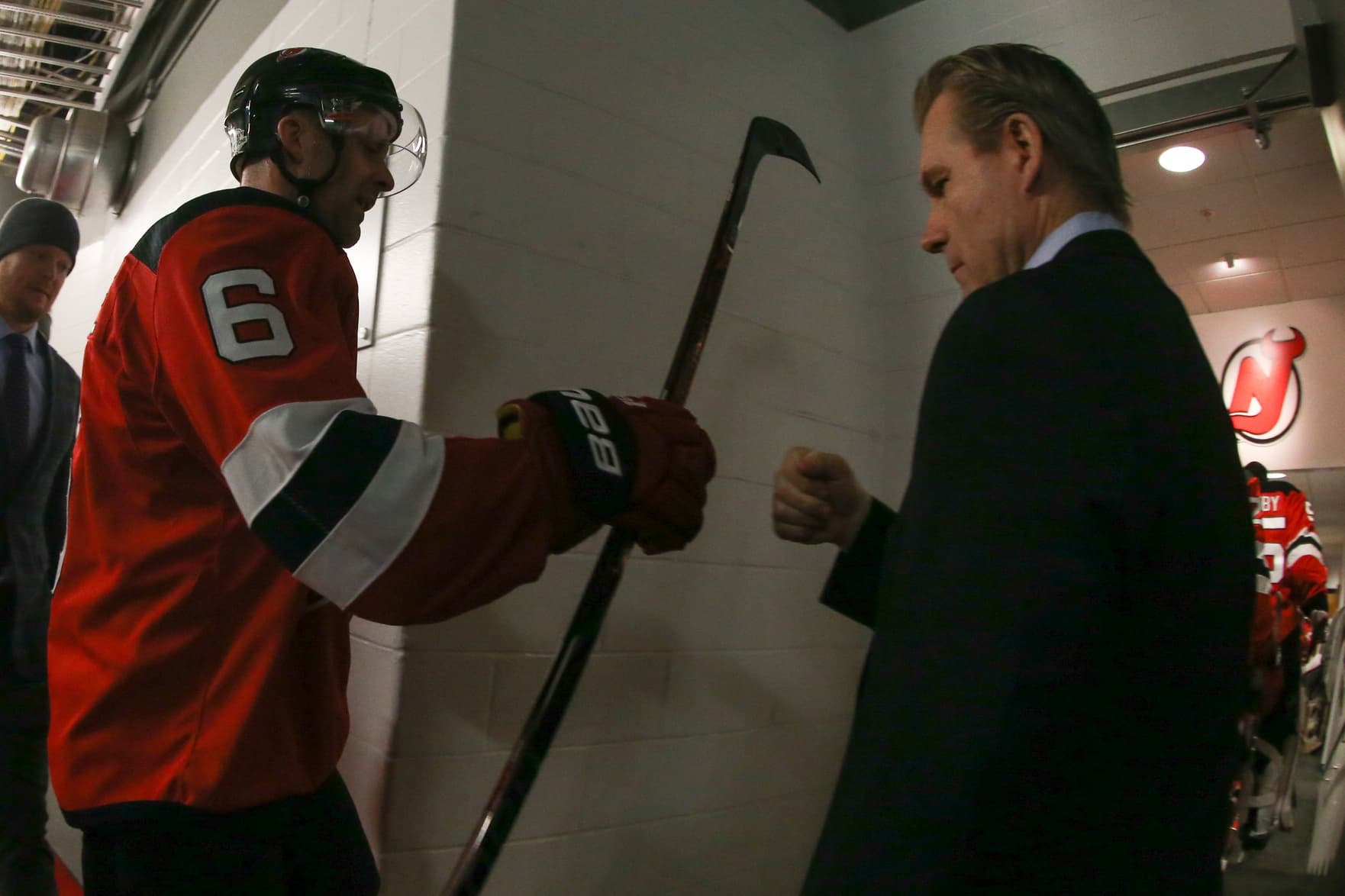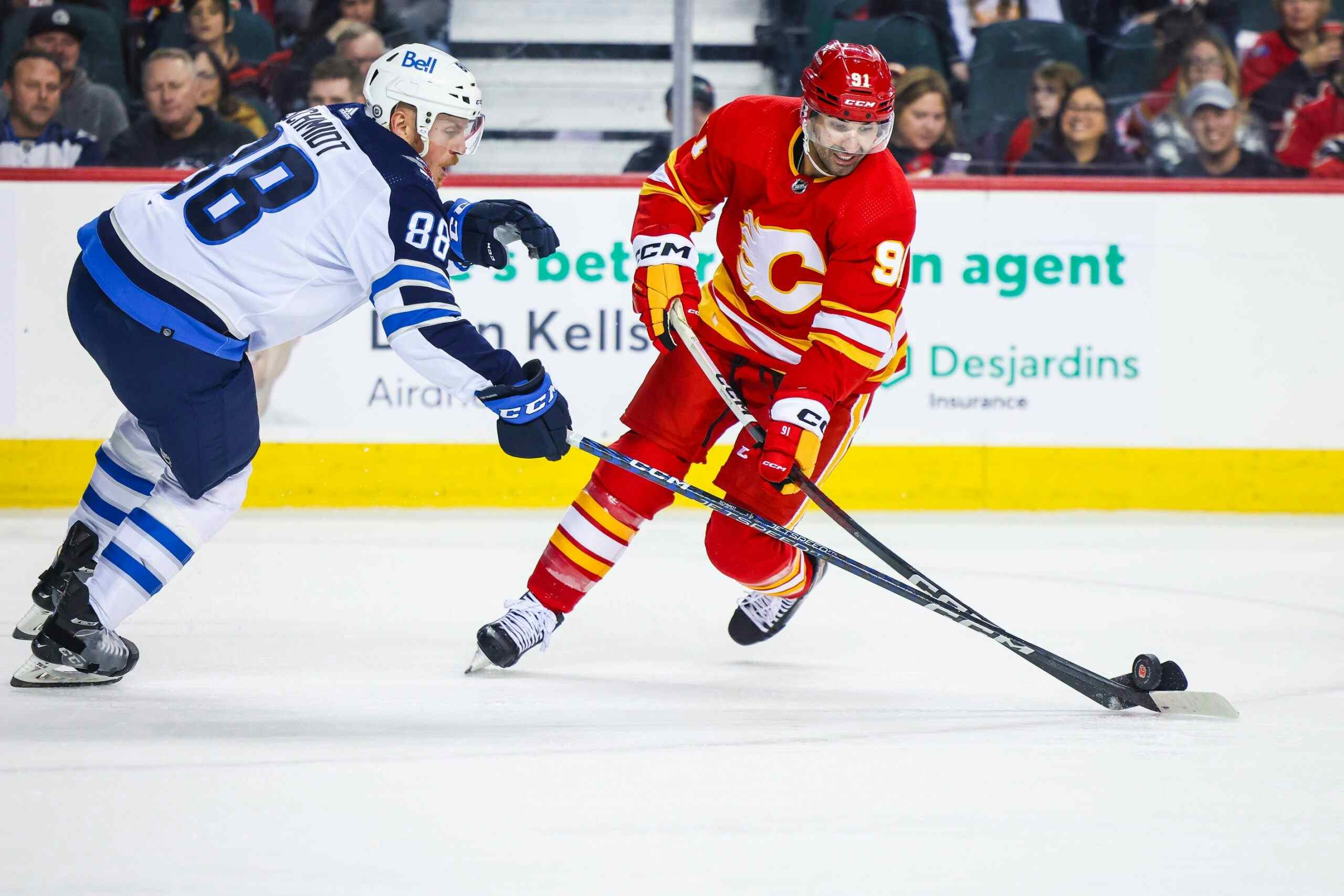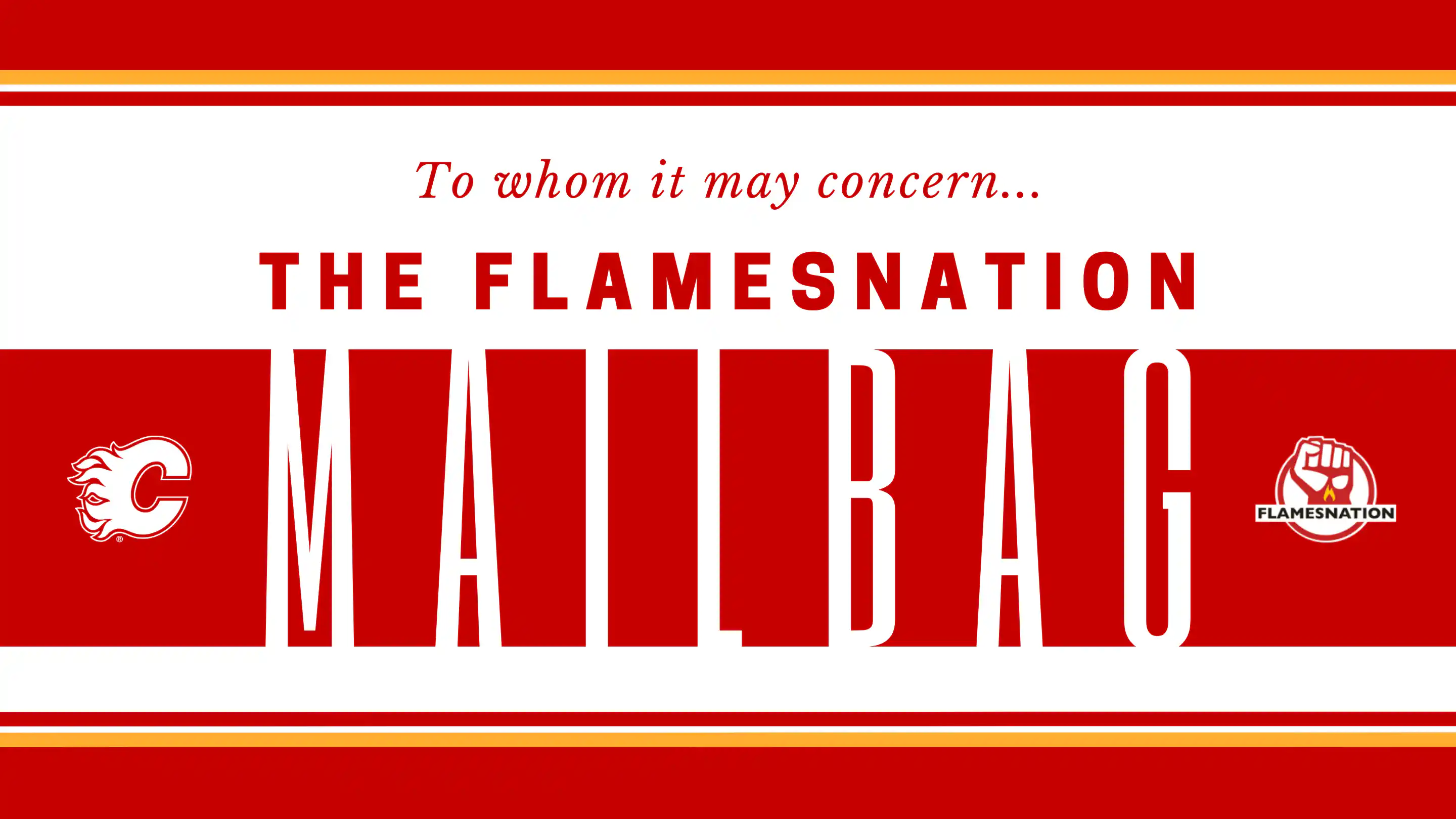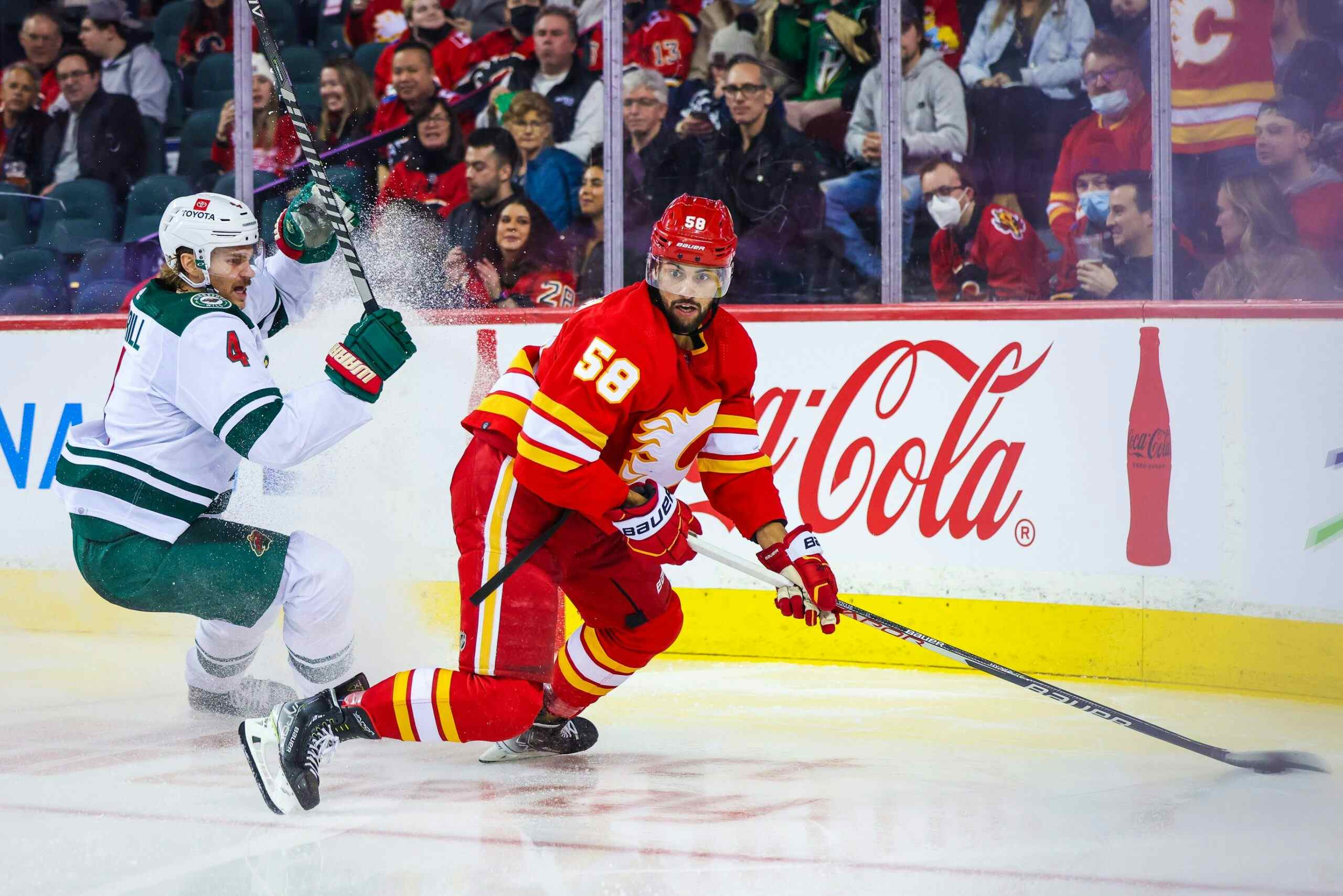FlamesNation coaching evaluation: the assistants

By Ryan Pike
4 years agoThe Calgary Flames debuted two brand-new faces behind their bench in 2018-19 as supports for new head coach Bill Peters. They primarily used three coaches to assist Peters with various aspects of the game.
Geoff Ward
Ward came to the Flames in the off-season, hired away from the Boston Bruins by way of a promotion to associate coach. Ward’s primary responsibilities were managing the forwards, the power play, and assisting Peters with in-game adjustments (with the assistance of Martin Gelinas, the team’s “eye in the sky”).
The Flames ran with four pretty consistent forward tandems:
- Johnny Gaudreau – Sean Monahan – Elias Lindholm
- Matthew Tkachuk – Mikael Backlund – Michael Frolik
- Sam Bennett – Mark Jankowski – James Neal
- Andrew Mangiapane – Derek Ryan – Garnet Hathaway
The successes of the forward groupings were the strong first two-thirds of the season for the top line, especially their offensive outbursts, and the emergence of the fourth line as a consistent offensive contributor. The coaching staff also wasn’t loathe to make in-game line shuffles or shorten the bench, particularly in situations where lines were struggling or the team was trailing.
On the negative side of the ledger, the coaching staff constantly juggled spots for Neal, Frolik and Austin Czarnik, and seemed to settle in on Frolik reuniting with the 3M Line in the second half of the season fairly begrudgingly after Czarnik failed to move the needle for Peters. Neal never really seemed to get going. While the top line’s late season struggles likely were partially due to their percentages regressing – they simply weren’t all going to have 100 point seasons – the coaching staff couldn’t seem to figure out how to make adjustments to change up their energy or get a bit more out of them in the playoffs.
The top power play unit was deadly all season (aside from a late lull) and was consistently comprised of Gaudreau, Lindholm, Monahan, Tkachuk and Mark Giordano. The second unit infamously started off cold and was subject to constant adjustments – often trying to get Neal some playing time – but seemed to get some energy late in the season when it was comprised of Backlund, Bennett, Ryan, TJ Brodie and Rasmus Andersson. Putting Andersson on that unit took awhile, but could be a big step in the young defender’s development as an offensive presence.
While the Flames didn’t have a perfect season, a lot of credit has to go to Ward for doing his best to give the group a chance to succeed. Aside from the team’s struggles to figure out Neal, for the most part they didn’t muck around with the lineup unless things weren’t working and they weren’t too stubborn to tinker if units were struggling – both were a positive change from Glen Gulutzan’s last season behind the bench.
Ryan Huska
Promoted from the American Hockey League’s Stockton Heat following last season and put in charge of the defense corps and the penalty kill, Huska had a pretty good first campaign as an NHL assistant coach. Heck, one of his players – veteran defender Mark Giordano – will probably win the Norris Trophy as the league’s top blueliner.
After a season where the defensive pairings were, to be blunt, not good, the Flames got a ton out of their back-end group in 2018-19. The biggest endorsement for Huska’s work is this: the Flames were without veterans Travis Hamonic and Michael Stone for big chunks of the season and were forced to rely on a rookie defensive pairing featuring two of Andersson, Juuso Valimaki and Oliver Kylington for the entire season. Not only did using three greenhorns not hurt them, but the addition of their youthful exuberance probably helped the Flames win a bunch of games. Andersson, in particular, had a tremendous season.
The penalty kill was a bit of a mixed bag, though the pressure-based system they used was pretty effective at times. On one hand, the Flames ended up getting lot out of Jankowski, Ryan and Hathaway by utilizing them as penalty killers, and the team collectively led the NHL in shorthanded goals. On the other hand, the team seemed to de-emphasize Backlund and Frolik – two strong PK performers – during the season. Some of that was likely an attempt to balance out ice time a bit and keep them fresh down the stretch for their even strength shutdown roles, but it likely weakened the team’s PK performance overall.
Huska’s anticipated strength as an assistant coach was thought to be his familiarity with the team’s younger players, as he had most of them in Stockton. Well, the team got quite a bit out of its young defenders (and Mangiapane, Jankowski and Hathaway) so utilizing Huska seemed to have worked. The challenge going forward will be to figure out a way to balance out ice time between the team’s key players while putting the best-suited pieces on the ice for the PK.
Jordan Sigalet
When Mike Smith struggled early in the season, Peters was asked during a media scrum what his philosophy was about his goaltenders. He quipped to us that he didn’t have a philosophy, he had a goalie coach. Sigalet was heavily relied upon this past season to effectively be a goalie whisperer and figure out which of the team’s two netminders – Smith and David Rittich – should get a run of starts.
Given that Rittich was injured for the final third of the season, it’s probably only fair to judge Sigalet’s goalie rotating on the two thirds of the campaign where they had two goalies to choose from. On that metric, you can argue he had a pretty effective year. When Smith was struggling early on, the Flames weren’t afraid to give several games to Rittich. When Smith got his mojo back, they weren’t terrified to keep rotating both netminders in to keep them fresh.
If you want to criticize the goaltender utilization, it’s probably fair to note that the team used both Smith and Rittich on back-to-back nights when the other was hurt and Jon Gillies was dressing as the back-up. It seems reflective of a lack of confidence in Gillies as a third-stringer, which is either a coaching fault or a development fault (or both). Getting Gillies some NHL playing time could’ve been useful for aiding his development or gauging how he was progressing in his development.
The other main criticism of the tandem’s performance regards their puck-handling. Smith’s adventures outside of his crease caused a lot of fan anxiety this season – you could audibly hear fans gasp from the press box whenever he ventured out to play the puck – and there seemed to be a push to get Rittich to do the same so that the team would get consistent puck-handling from their goalies – he infamously got burnt when he played the puck right to San Jose’s Brent Burns and was yanked from the game as a consequence. It’s unclear whose idea this was, but the results were uneven (at best) and likely cost the team points at times in the season. Considering how young and malleable Rittich is as a North American goaltender, it seems like keeping him in his crease would be best for everybody going forward.
Based on how things went for the most part, though, it seems fair to give Sigalet the benefit of the doubt regarding how the team used Rittich and Smith when they were both healthy. The team got consistently solid goaltending throughout the year and seemed to get as much as they could out of their tandem.
2018-19 player evaluations
#4 Rasmus Andersson | #5 Mark Giordano | #7 TJ Brodie | #8 Juuso Valimaki | #10 Derek Ryan | #11 Mikael Backlund | #13 Johnny Gaudreau | #18 James Neal | #19 Matthew Tkachuk | #21 Garnet Hathaway | #23 Sean Monahan | #24 Travis Hamonic | #27 Austin Czarnik | #28 Elias Lindholm | #33 David Rittich | #41 Mike Smith | #55 Noah Hanifin | #58 Oliver Kylington | #67 Michael Frolik | #77 Mark Jankowski | #88 Andrew Mangiapane | #93 Sam Bennett | Complementary Players | Bill Peters
Recent articles from Ryan Pike





